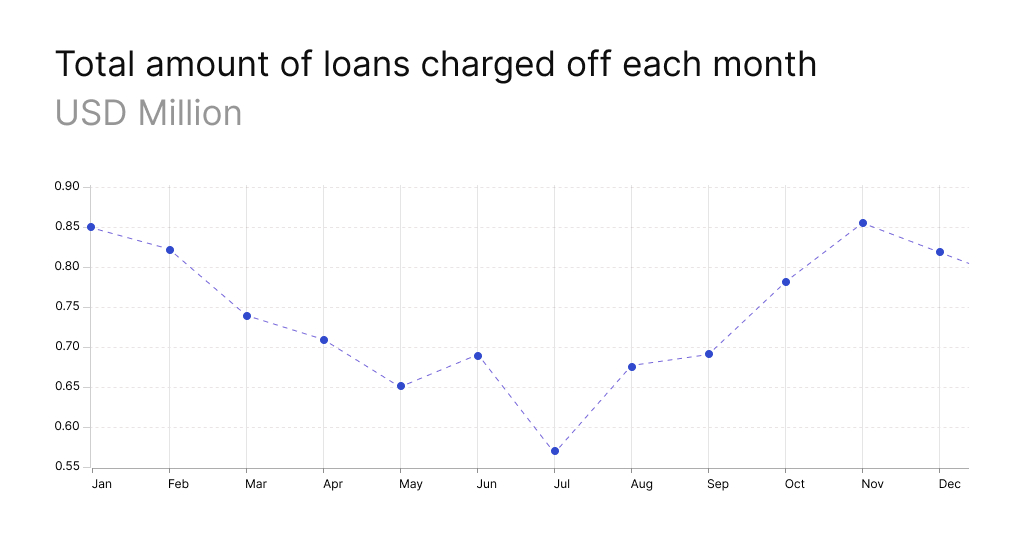Predictive Analytics in Marketing & 5 Ways to Use It

The predictive marketing outreach growth makes 23% year over year, so if you are not going to catch on, it is highly likely your competitors will. Let’s consider how predictive analytics marketing optimization can help your business efforts (spoiler: better marketing decisions = higher revenue), and if it is worth investing in the near future or you can postpone this decision.
First, let’s make it clear what we mean by saying “predictive analytics in marketing”. It refers to the use of statistical techniques (like AI/ML, data mining, predictive modeling) to process historical and/or current data in order to assess the probability of a certain future outcome.
If that sounds too complicated, let’s consider practical examples of how predictive analytics marketing strategy can help in cross-sales. AI and predictive analytics will suggest premium oysters to accompany a bottle of nice Sauvignon Blanc, not a pack of M&M’s. Just as well it would understand that a man who purchases an Armani suit is a better target for C-class Mercedes than for a Ford Transit.
Those examples may seem very simple, but more cases of predictive intelligence come into play year by year. Advanced computer algorithms make predictions more accurate and far-reaching, and, most important, fully automated.
In this article, we’ll be discussing the power of predictive marketing and shed the light on the best predictive analytics marketing tools.
How to Use Predictive Customer Analytics in Marketing
Given the abundance of data around, marketers may require advanced tools and measurement approaches, such as advanced predictive analytics tools for marketing, software based on Artificial Intelligence and Machine Learning. AI and ML play a great role in omnichannel marketing while they help marketers gather insights and adjust their marketing strategies in real-time, for example, introducing dynamic pricing, automated sales forecast, automated content creation, and more.
The AI adoption rate
According to Gartner, 37% of businesses have already implemented some form of AI, which resulted in an increase of impressive 270% for 2015-2019. According to McKinsey’s research of the AI state in 2021, the AI adoption rate is getting higher: 50% of respondents say about AI adoption in 2020, and 56% – in 2021. What is especially interesting, the massive AI adoption in the COVID times is happening in emerging markets, such as China, the Middle East, and North Africa.
What can marketers do with the obtained data?
Digital marketing predictive analytics can decode the past behavioral patterns and project the future patterns and suggest (or automatically make) data-driven decisions. Let’s consider some of the actions marketers can take when the data is mined and predictive analytics is applied.
Marketers can forecast seasonal customer behavior. For example, in the picture, you can see seasonal fluctuations of loans charged off.

Marketing teams can use predictive analytics customer behavior to target the most profitable products/services to certain client groups or suggest complementary goods and services based on customer buying behavior. It can help gain more insights about customer behavior and explore repeat customers to create additional business opportunities. Predictive analytics in marketing allows prioritizing customers by their likeliness to purchase the highest-margin products or initiate returns.
Also, AI can help build effective marketing and advertising strategies by detecting the right audience and the right channel, as well as creating the proper messages and offers. To sum it all up:
5 Ways to Use Predictive Analytics in Marketing

Customer segmentation via cluster modeling
Digital marketing predictive analytics helps to segment your audience the most meaningful way, be it information about their behavior, demographics, interests, or other variables. Also, it allows showing the importance of each parameter. Cluster models allow finding patterns that may appear useful to your audience. This modeling type is used in different spheres:
- In retail to personalize ads
- In streaming services to identify high usage and low usage users and offer paid subscriptions to the necessary group
- In sports science to find similar players that can back up each other
- In email marketing to tailor the frequency of emails and their content
- In health insurance to minimize losses.
Acquiring new customers via identification modeling
While you are familiar with customer segmentation, customer data can also be used for identification models to target prospective customers that have a lot in common with your existing customers – geography, demographics, level of income, favorite places, accounts they follow. A great example of identification modeling as a predictive analytics method used in marketing is Lookalike Audiences on Facebook created for ad campaigns.
Lead scoring via AI/ML algorithms
Lead scoring is known as one of the most used predictive analytics marketing campaigns according to Forrester. The algorithms use existing customer data to rank prospects according to their likelihood to convert. A similar principle is used in GiniMachine: files with customer data are uploaded to the system and the prediction model is created. Business users can score leads, applications, non-performing loans, churning customers, and more and see which data types have the most impact on the scoring results.
Depending on the business model, the data can be used to trigger marketing messages, approve or decline loan applications, or prioritize your support, sales, or collection team outreach efforts.
Content recommendations via Collaborative filtering
As for content and ad recommendations, marketers need to closely monitor the strategies of top e-commerce platforms (like Amazon or Alibaba) and streaming services (like Spotify or Netflix) and see which of them they can use for their business type. Collaborative filtering analyzes user behavior, like content consumption patterns to make relevant recommendations, as well as to demonstrate cross-sell and upsell opportunities. It allows showing the engaging content at an earlier stage and shortening the sales cycle.
Personalization of customer experience via Automated segmentation
The good news is that personalization is now more than “Hi, [name]” in emails and text messages. The not-so-good news is that going beyond that requires certain skills in predictive analytics marketing optimization. After customer segmentation, lead scoring, and content recommendations, you can use automated segmentation to create personalized chatbots, offers, and other interaction types. But how to provide personalized experiences without being creepy? The answer is to find the balance between personalization and automation. Fast automated customer service with smart bots, personalized websites with special offers for segmented customers, creative surveys with incentives, coupons, and other treats will help customers feel valued, not haunted.
Best Predictive Analytics Marketing Tools
- IBM, SAP, Oracle – enterprise-level customizable solutions for CRM using predictive analytics
- Tableau, Marketo, GoodData – could be suitable for smaller retail businesses
- EverString, Radius, Halo, Board – contain some specific functionality
- GiniMachine – no-code AI-based web app suitable for application scoring, churn prediction, collection scoring, and more. Apply for a free demo to reveal the power of predictive analytics tools for marketing in action.
Marketers are always in search of new ways and methods to tailor their campaigns to individual customer needs and boost the marketing ROI and customer retention, as well as create a better customer experience. Today the entire process is automated, data-driven, and AI-powered. To stay competitive, make sure you choose top-notch predictive marketing analytics software along with no-node AI/ML tools for precise targeting and smart business decisions.



